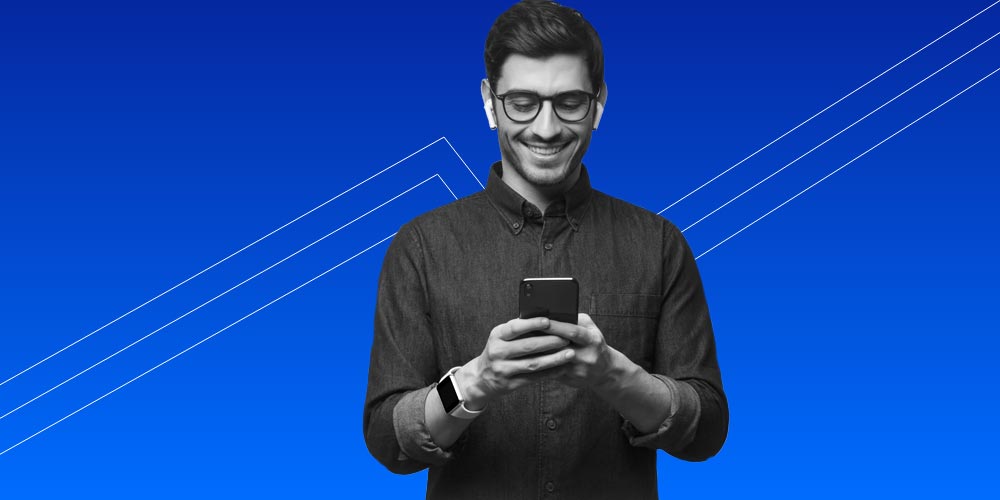What is Direct Deposit and Why Should You Set It Up?

It can be nice to have an automatic option, especially regarding important stuff you don't want to forget. Many agree that paying your bills and receiving your paycheck on time are two checklist items that fit under the "important stuff."
That's why it could be a good idea to set up direct deposits for receiving your paycheck, tax refund, or any other money coming your way. You can even set it up to deposit money into a savings account.
What is direct deposit?
Direct deposit is an electronic payment system that allows for transferring funds directly from one bank account to another without needing paper checks or cash. It is a fast, secure, and efficient method businesses and individuals use for payments, government benefits, tax refunds, and other financial transactions.
How does direct deposit work?
Direct deposit transactions are facilitated through the Automated Clearing House (ACH) network, which connects financial institutions and enables the transfer of funds. The payer, such as an employer or government agency, initiates the transaction, providing the necessary account and routing information. The receiving bank then deposits the funds into the recipient's account, typically within 1-3 business days. Here's an overview of the technical details involved in direct deposit transactions:
- Initiating a direct deposit transaction: The payer (e.g., employer) initiates a direct deposit by creating an ACH file that includes the necessary details, such as the recipient's bank account and routing number, the amount to be transferred, and a transaction code.
- Transmitting the ACH file: The payer's bank, also known as the Originating Depository Financial Institution (ODFI), receives the ACH file and validates the transaction. The ODFI then forwards the file to the ACH Operator, a central clearinghouse that processes ACH transactions.
- Processing the transaction: The ACH Operator sorts and processes the ACH file, determining the appropriate Receiving Depository Financial Institution (RDFI) for each transaction. The RDFI is the recipient's bank responsible for depositing the funds into the recipient's account.
- Settlement: The ACH Operator facilitates the settlement process, which involves the transfer of funds between the ODFI and RDFI. The ODFI transfers the total amount of the ACH transactions to the RDFI, and the RDFI credits the recipient's account with the deposit amount.
- Notification and record-keeping: Both the payer and the recipient receive a notice (either electronically or through account statements) of the completed direct deposit transaction. This ensures transparency and allows for easy record-keeping and reconciliation.
Is it safe to use direct deposit?
Of course, you must be careful when handing out your direct deposit information because it includes your personal data and information. Suppose you're giving it to an employer, utility company, or even the federal government. In that case, you'll want to make sure the payer or payee is truly who they say they are, or you could be opening yourself up to identity theft.
Setting up direct deposit with your employer
Setting up direct deposit with an employer is usually a straightforward process. Employees typically need to:
- Fill out a direct deposit authorization form provided by the employer.
- Provide bank account information, including account number and routing number.
- Submit a voided check or deposit slip (if required) to verify account details.
- Once the necessary information is submitted, the employer will process the direct deposit, and employees can expect to receive their paychecks electronically.
Benefits of direct deposit for getting paid
- Faster access to funds: No delays are associated with mailing or depositing checks.
- Increased security: There is a reduced risk of lost or stolen checks.
- Reduced environmental impact: It eliminates the need for paper checks.
- Convenience: Funds are automatically deposited into the designated account.
- Simplified money management: A clear electronic record of all transactions.
Drawbacks of direct deposit for getting paid
- Potential for errors: Incorrect account information may delay or misdirect payments.
- Limited access: Not available to individuals without a bank account.
Setting up direct deposit to pay your bills
Many businesses and service providers accept direct deposit for bill payments. This can streamline the bill-paying process, ensuring timely payments and reducing the likelihood of late fees or penalties. To set up bill payment using direct deposit, you'll typically need to:
- Gather your biller information: Collect the necessary information for each biller or service provider, including their name, their billing address, your account number with the biller, and any additional information required for payment identification.
- Contact your billers: Contact them or visit their websites to determine if they accept direct deposit payments. If they do, obtain the billers' required bank account and routing numbers.
- Access your bank's online banking platform: Log in to your bank's online banking portal or mobile app. Locate the section for setting up bill payments, often labeled as "Bill Pay," "Payments," or "Transfers."
- Add billers to your payment list: Enter the biller information, including their name, billing address, bank account number, and routing number as well as your account number with the biller. Save this information in your bank's bill payment system to streamline future payments.
- Schedule payments: Select the billers you wish to pay and enter the payment amount and date. You can set up one-time payments or schedule recurring payments, depending on your preferences and the biller's requirements.
- Review and confirm payment details: Double-check the payment information, including the payment amount, date, and account details. Confirm the transaction to initiate the direct deposit payment.
- Monitor payment status: Keep an eye on your payment status through your bank's online banking platform or mobile app. Payments are typically processed within 1-3 business days, but processing times may vary depending on your bank and the biller.
- Record-keeping: Maintain records of your direct deposit bill payments electronically or by saving a physical copy of the payment confirmation. This will help you track your expenses, manage your budget, and resolve any potential discrepancies.
Benefits of paying bills using direct deposit
- Automated payments: Reduces the chances of missed payments or late fees.
- Consolidated record-keeping: Makes it easier to track expenses and budgets.
- Environmental impact: Decreases reliance on paper bills.
- Reduced fees: Lowers the cost when compared to alternative payment methods, such as credit cards.
Drawbacks of paying bills using direct deposit
- Limited control: Recurring payment funds are automatically withdrawn, often without notice.
- Potential for errors: Overpayment or duplicate charges may occur.
- Risk of insufficient funds: Can lead to overdraft fees or returned payments.
Can you set up direct deposit without a bank account?
All of this direct deposit stuff sounds nice, right? You don't have to worry about losing paper checks or potentially missing a bill payment because your paycheck hasn't arrived.
But what if you don't have any banking information available?
If you can't qualify for a traditional checking account due to your financial history, there are other options you can still consider, like a second-chance bank account or a co-signer. If neither of those options are available to you, or if you're more of a "money-under-the-mattress" type of person, you might still be able to take advantage of direct deposit.
The U.S. Treasury Department's Go Direct Program offers a "Direct Express Mastercard" that can be used to receive federal benefits. There are also options to consider for the many payments that are not government benefits.
PayPal, for example, isn't just a simplified alternative for online banking and electronic payments. They also offer a prepaid debit card that can be used to receive direct deposit payments. It's important to realize, however, that banks offer many benefits beyond access to direct deposits that a PayPal debit card or similar card does not. One example is FDIC insurance, which means that if a bank has funding problems, that shouldn't affect your money. If you had a debit card provider that was not FDIC-insured and somehow disappeared, well … you could be in some trouble then.
The bottom line
Direct deposit offers numerous benefits, including faster access to funds, increased security, and enhanced convenience. However, weighing the potential drawbacks, such as errors or reduced flexibility, is essential before fully embracing the system. Ultimately, direct deposit can be an invaluable tool for managing personal finances and streamlining bill payments, but it's necessary to use it wisely and stay vigilant about monitoring account activity.




